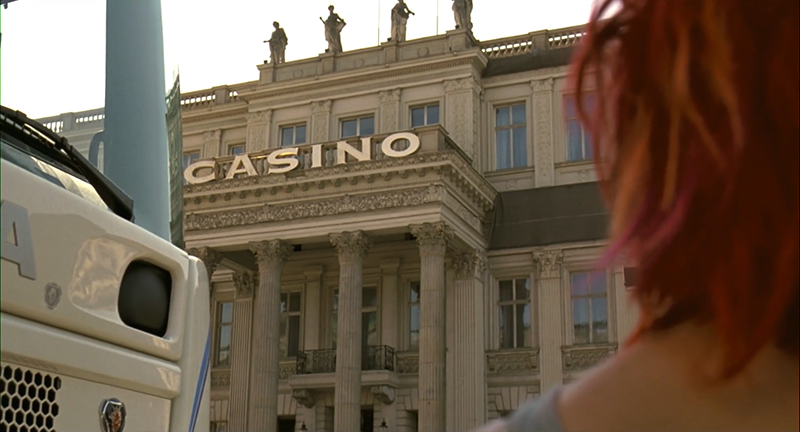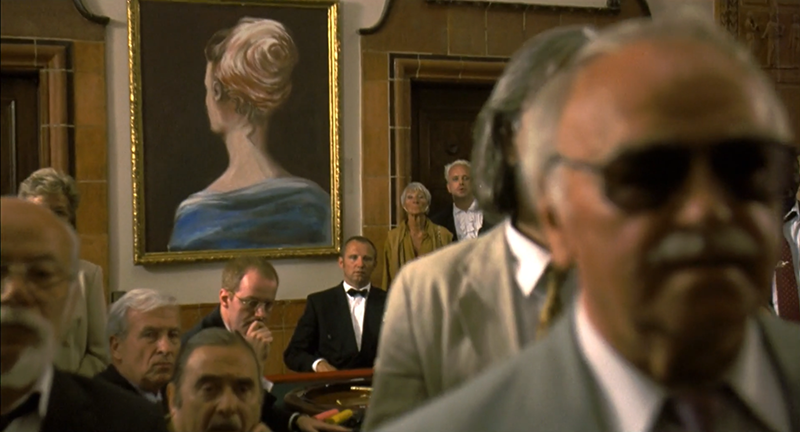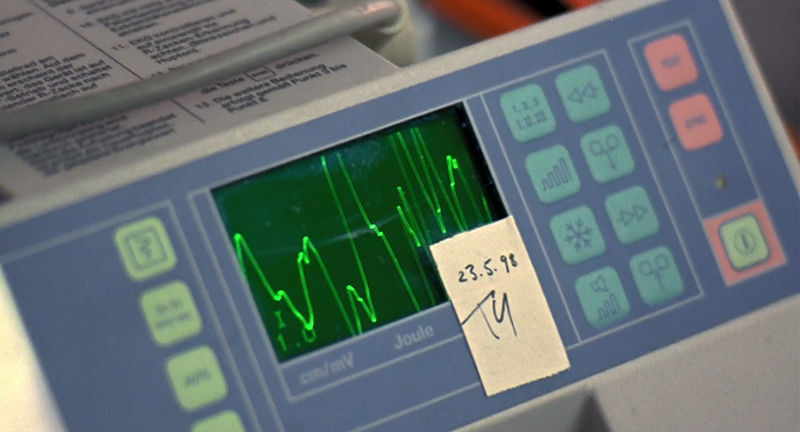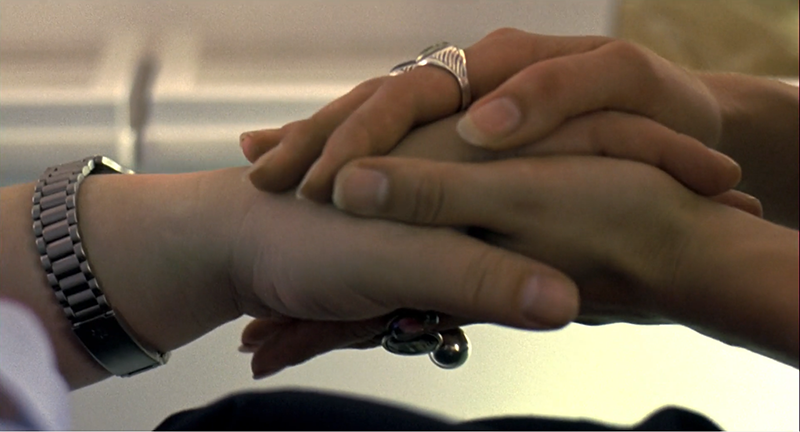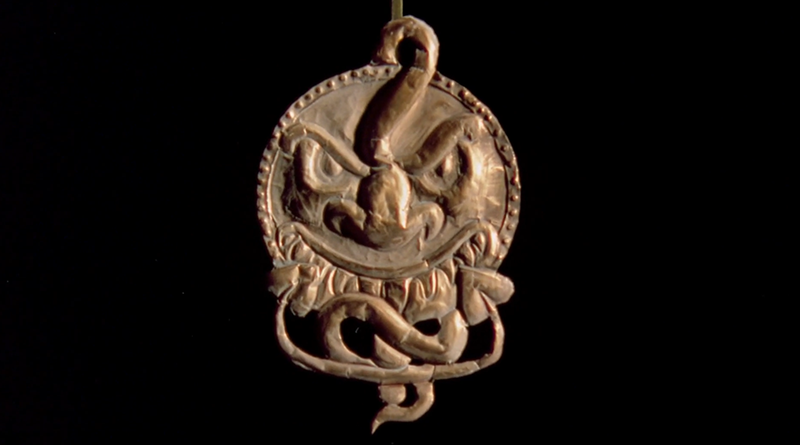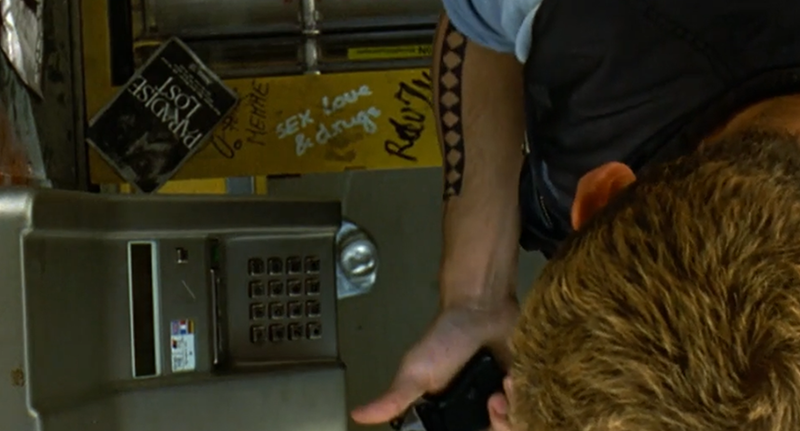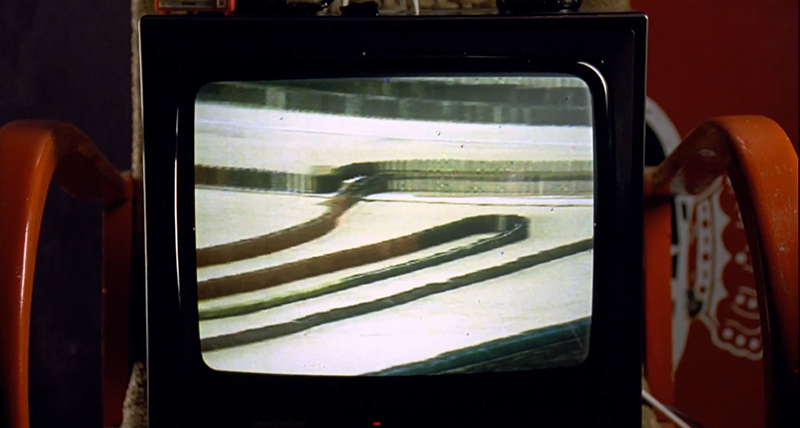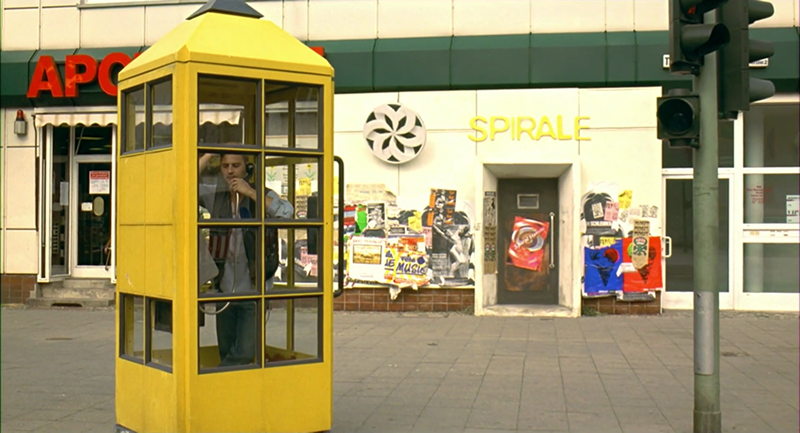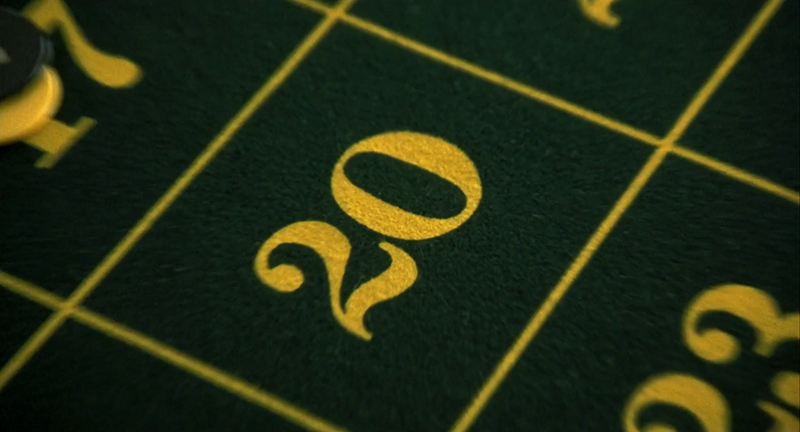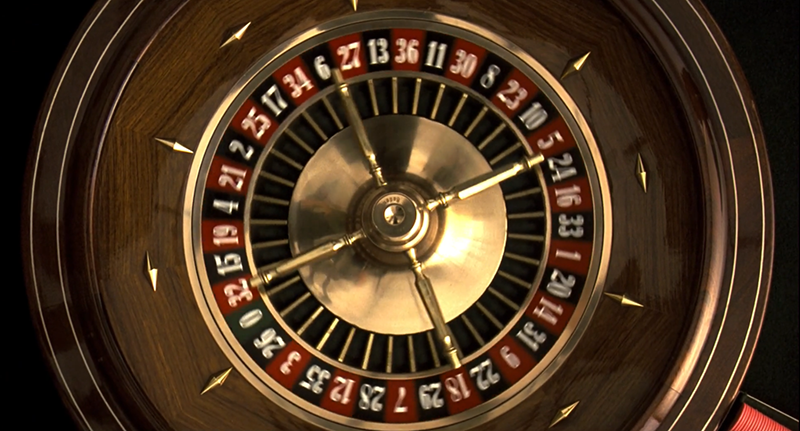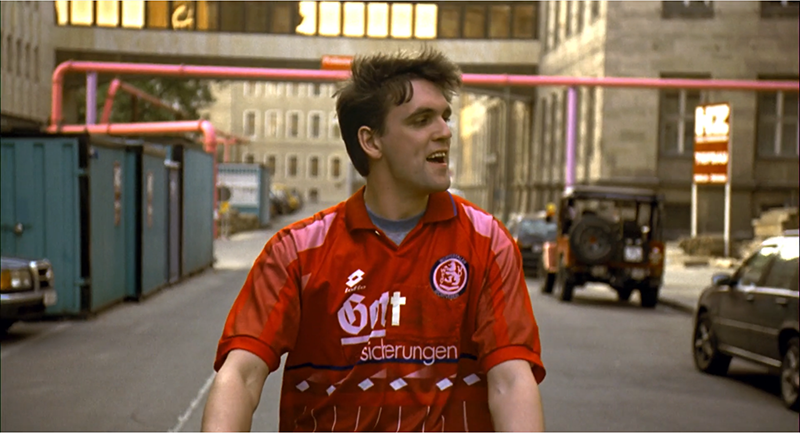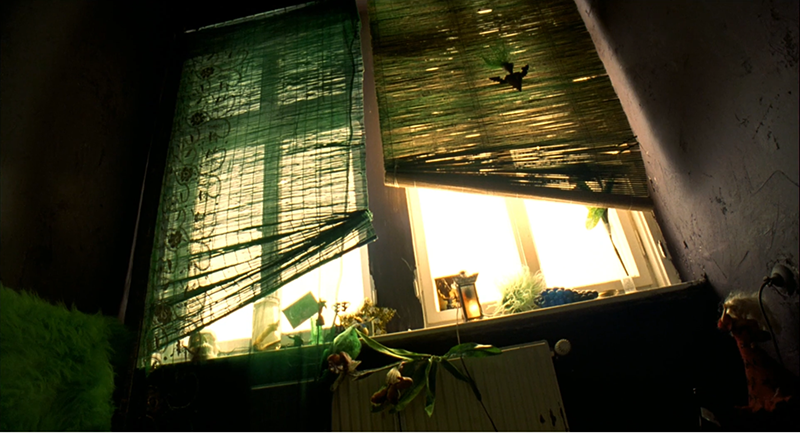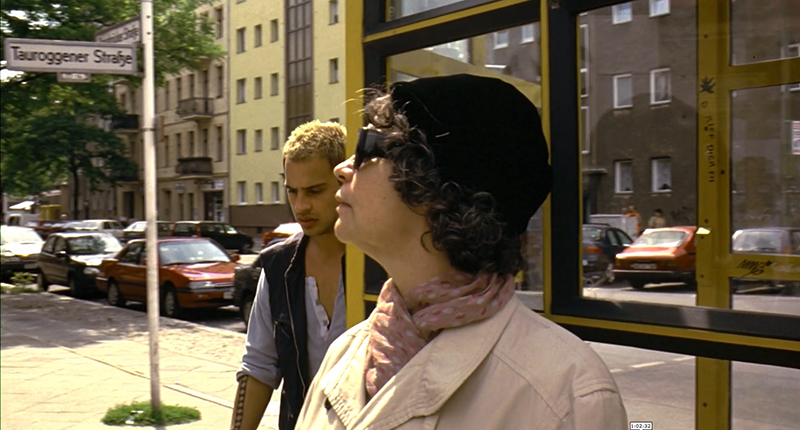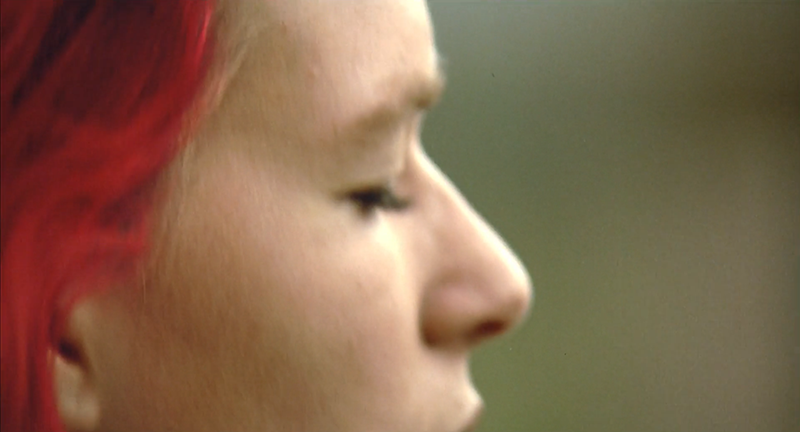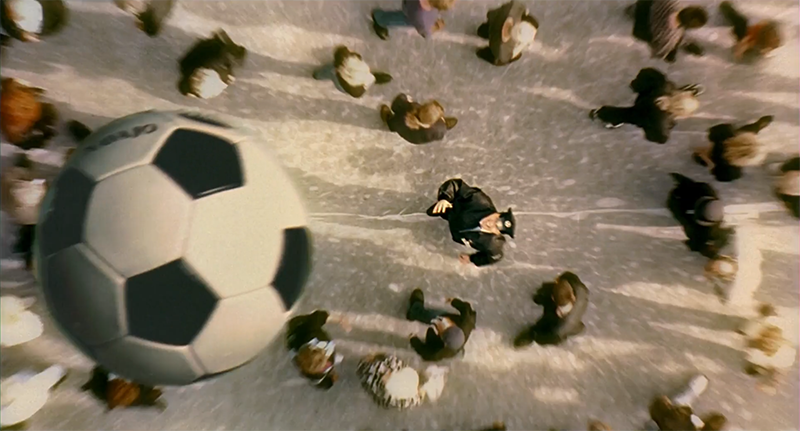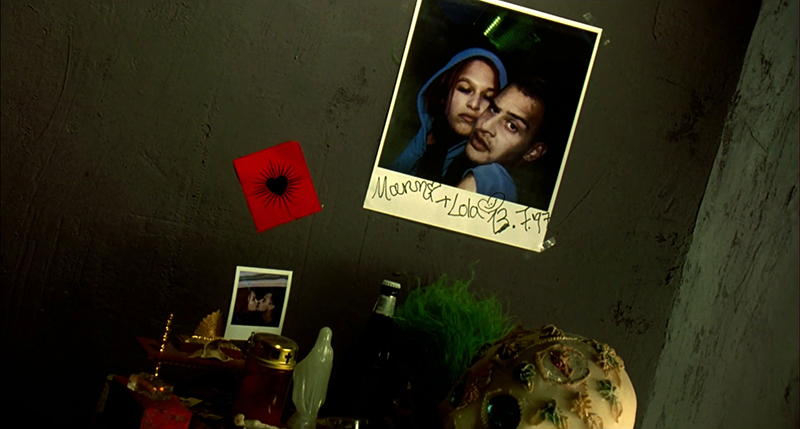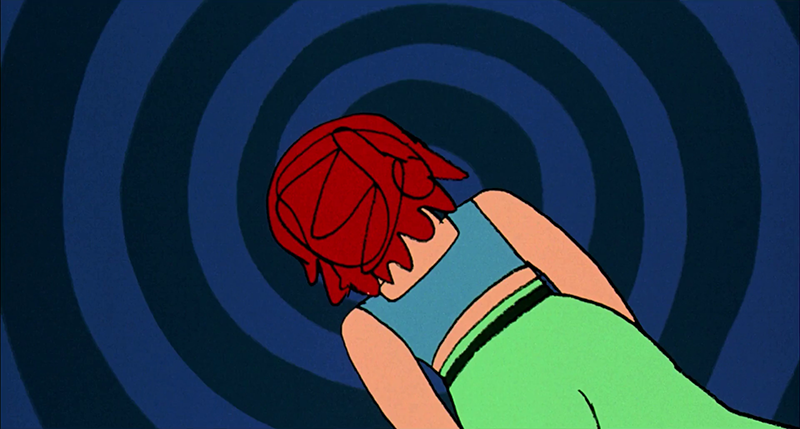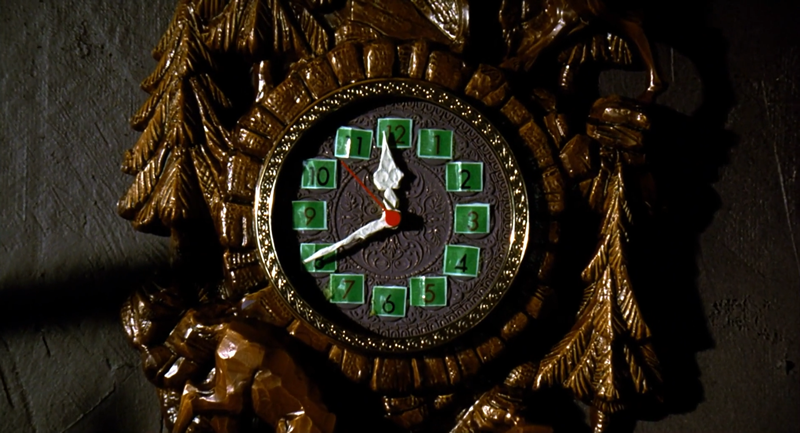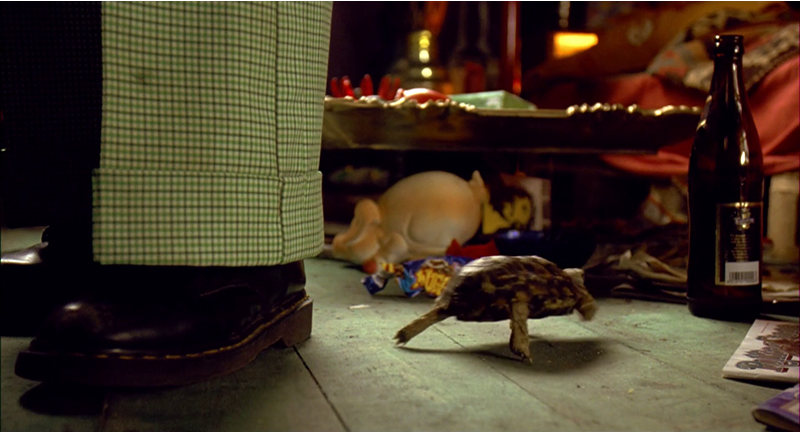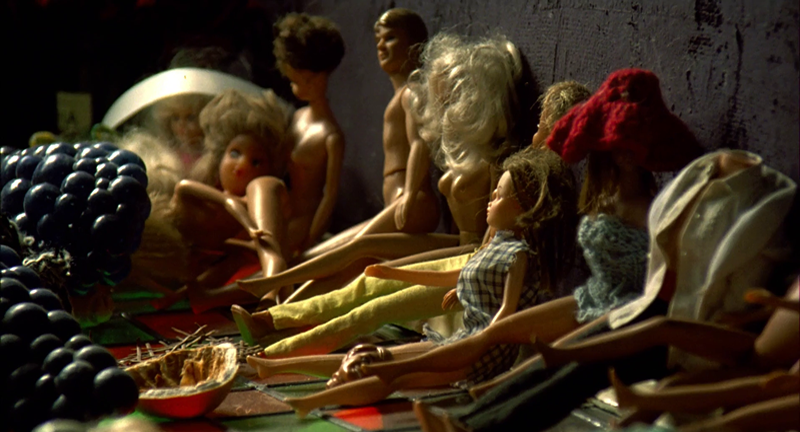Motifs and Symbols
Recognising symbols and motifs and interpreting them in the context of the film plot
In many films, we find references and allusions to other films, literature, art, music, religion – the list could be continued endlessly. Some are only understandable to insiders, others are easier to decipher. Run Lola Run is also peppered with references. Untersucht werden hier insbesondere die Symbole und Motive, die im Film verwendet werden. Below, you will be looking at the symbols and motifs which are used in the film.
Key concepts: Symbols and Motifs
Symbols are carriers of meaning that represent something else and whose meaning we learn through experience and culture.
For example, the cross is a symbol of Christianity. Letters, traffic signs or the dials of clocks are symbols.
Motifs are narrative building blocks that are significantly repeated in a film text and reappear during the film. A motif can be, for example, an object, a colour, a place, a sound, a melody or even a certain stylistic use of the camera.
Individual elements in the film can thus take on the role of both symbols and motifs.
Motifs are narrative building blocks that are significantly repeated in a film text and reappear during the film. A motif can be, for example, an object, a colour, a place, a sound, a melody or even a certain stylistic use of the camera.
Individual elements in the film can thus take on the role of both symbols and motifs.
Key concepts: Religious symbols
The term symbol is generally used to refer to any signifier (sign, word, object, process, etc.) that denotes a
concept or idea (of
something that does not have to be present). Which idea is defined more precisely and sometimes very
differently in various different fields of application.
All religions express core ideas in symbols, for example the wheel (as a symbol of eternal return), the cross (as a symbol of the suffering and death of Jesus, but also of reconciliation with God) and the way (as a symbol of life history or lifestyle).
A numerical symbolism also runs through many religions, for example, some Christian thought considers the number three as the number of the Trinity and the theological virtues (faith, love, hope), and the number four as the number of the world: there are four times of day and seasons; cardinal points; elements; ages; streams of paradise (Euphrates, Tigris, Pison, Geon), sometimes depicted as men with water jugs, for example at the baptismal font of Hildesheim Cathedral; great prophets; and evangelists.
Three and four add up to seven, and when multiplied make twelve. In Christianity, the number seven has a variety of meanings; it is interpreted here as a combination of the divine Trinity (three) with the world (the four earthly elements). In the Book of Revelation (a letter to seven churches predicting the Apocalypse), the number seven is mentioned 54 times, including the book with seven seals; the seven trumpets, each of which heralds another apparition of the Last Days; seven bowls; seven plagues; and a seven-headed beast. We also have the seven virtues and the seven deadly sins. There are the twelve tribes of Israel and, connected to them, the twelve apostles.
Religious symbols are elements which form part of religious identification, language and actions. Every "religious language" is essentially symbolic, because religion usually refers to a reality that transcends the superficially visible reality.
All religions express core ideas in symbols, for example the wheel (as a symbol of eternal return), the cross (as a symbol of the suffering and death of Jesus, but also of reconciliation with God) and the way (as a symbol of life history or lifestyle).
A numerical symbolism also runs through many religions, for example, some Christian thought considers the number three as the number of the Trinity and the theological virtues (faith, love, hope), and the number four as the number of the world: there are four times of day and seasons; cardinal points; elements; ages; streams of paradise (Euphrates, Tigris, Pison, Geon), sometimes depicted as men with water jugs, for example at the baptismal font of Hildesheim Cathedral; great prophets; and evangelists.
Three and four add up to seven, and when multiplied make twelve. In Christianity, the number seven has a variety of meanings; it is interpreted here as a combination of the divine Trinity (three) with the world (the four earthly elements). In the Book of Revelation (a letter to seven churches predicting the Apocalypse), the number seven is mentioned 54 times, including the book with seven seals; the seven trumpets, each of which heralds another apparition of the Last Days; seven bowls; seven plagues; and a seven-headed beast. We also have the seven virtues and the seven deadly sins. There are the twelve tribes of Israel and, connected to them, the twelve apostles.
Religious symbols are elements which form part of religious identification, language and actions. Every "religious language" is essentially symbolic, because religion usually refers to a reality that transcends the superficially visible reality.
Task 1
In the gallery you will find stills from Run Lola Run, showing various symbols or motifs.
- Select still images and bring them to the workspace by tapping the camera in the gallery. Enlarge the still image on the workspace and lasso it to cut out the corresponding picture element.
- In 'Key concepts: Symbols and Motifs' you will have learned something about the difference between the two. Use the stickers to mark your chosen image – where possible – as a symbol or motif.
- Distinguish between religious and non-religious symbols. Are there other categories into which the symbols and motifs can be divided? Illustrate these categories with note cards and groupings in the workspace.
- Research the possible meanings of the symbols you have discovered. A search engine with a "reverse image search" can be helpful here. Record your research results using the note cards.
Cut out
Symbol oder motif?
Religious or not?
Note cards
Arrows
- Make educated guesses about what the director wants to express by using these motifs and symbols.
